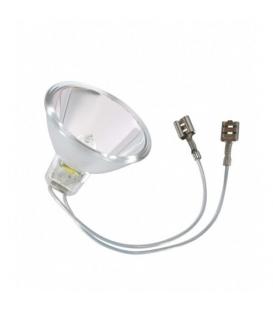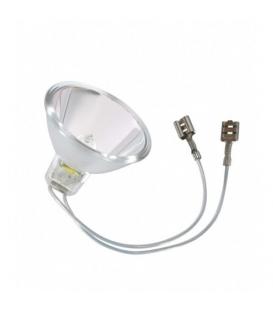Airfield Light Bulbs
For the takeoff and landing of airplanes in the dark or in poor visibility conditions, the right lighting is essential to ensure safe air traffic at the airport.
Key features and components of airfield light bulbs:
-
Durability and Reliability: Airfield light bulbs are built to withstand harsh environmental conditions, including temperature fluctuations, moisture, and exposure to jet engine exhaust. They are constructed to have a long lifespan and minimal maintenance requirements to ensure continuous and dependable operation.
-
Colors and Types: Different types of airfield light bulbs emit different colors and are used for specific purposes. The International Civil Aviation Organization (ICAO) and the Federal Aviation Administration (FAA) define specific color codes for various types of lights on airfields. Common colors include white, red, green, and blue, each indicating a specific function or location.
- White lights are typically used for runway edge lights, threshold lights, and approach lighting systems.
- Red lights are used for runway end identifier lights and obstruction lights on tall structures.
- Green lights mark taxiways and taxiing paths.
- Blue lights are used for taxiway edge lights and apron lighting.
-
Lighting Categories: Airfield lighting is categorized based on its purpose and the type of operation it supports:
- Runway Lights: These lights help pilots identify the runway's edges and centerline during takeoff and landing. They also provide visual cues for alignment and approach.
- Taxiway Lights: These lights guide aircraft along taxiways between runways, terminals, hangars, and other areas of the airport.
- Apron Lights: Apron lighting illuminates the aircraft parking and maintenance areas, allowing ground crew to safely navigate and service aircraft.
- Approach Lights: These lights provide guidance to pilots during the approach phase of landing, helping them maintain the correct glide path and alignment.
-
Lighting Control: Airfield lighting systems are often equipped with sophisticated control mechanisms to adjust the intensity of the lights based on ambient lighting conditions, visibility, and operational needs. Some systems also incorporate sensors to automatically activate lights when an aircraft is in the vicinity.
-
Maintenance and Monitoring: Regular maintenance and monitoring of airfield lighting systems are essential to ensure their proper functioning. Remote monitoring and diagnostic capabilities are often integrated into modern systems to detect and address issues promptly.
-
LED Technology: In recent years, light-emitting diode (LED) technology has become increasingly popular for airfield lighting due to its energy efficiency, longevity, and precise control capabilities. LED lights offer improved visibility and reduced maintenance compared to traditional incandescent or halogen bulbs.
Overall, airfield light bulbs play a crucial role in maintaining the safety and efficiency of airport operations, helping pilots navigate and maneuver aircraft on the ground, even in challenging weather conditions or low light situations.












































